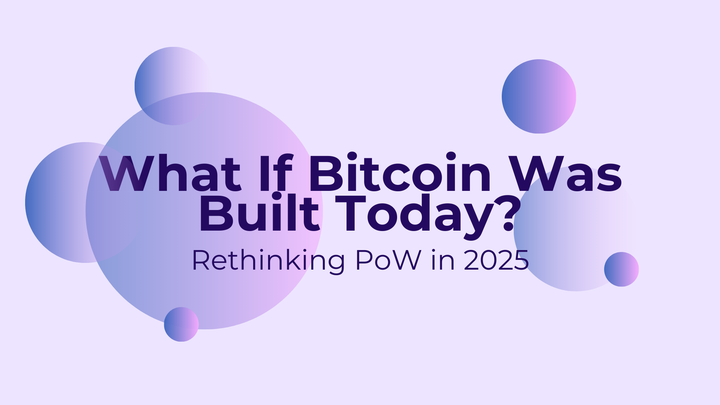Coinbase Hacking: Analysis and Implications for Exchange Security in Relation to Mitosis
Picture this: Coinbase, the big kahuna of U.S. crypto exchanges, gets hit by a sneaky cyberattack in 2025. Hackers, playing dirty, bribe some support agents to snag personal data from about 69,461 users—less than 1% of Coinbase’s massive user base, but still a gut punch. We’re talking names, addresses, phone numbers, government IDs, and account deets, all siphoned off, with a financial hit estimated between $180–$400 million. That’s not pocket change, even in the wild world of crypto. This Coinbase hacking fiasco is like a digital heist movie, exposing the soft underbelly of centralized exchanges and making everyone question: how safe is our crypto stash?Now, let’s talk exchange security. It’s the whole toolkit—think encryption, two-factor authentication (2FA), withdrawal allow-lists, and fancy tech to sniff out shady insiders—that crypto platforms like Coinbase use to keep your Bitcoin, Ethereum, and meme coins safe. It’s the fortress around your digital gold, but as the 2025 hack showed, even fortresses have weak spots, especially when humans are involved.Then there’s mitosis, straight out of high school biology. It’s how cells split into two identical copies, keeping organisms growing, healing, and thriving. Think of it as nature’s way of copying and pasting DNA to make sure everything runs smoothly. So, what’s the deal with linking a crypto hack to cell division? Stick with me—this article dives into how the Coinbase hack connects to mitosis, unravels the nitty-gritty complexities, and shows how it shakes out for the crypto ecosystem, from small-time hodlers to whale investors.Coinbase Hacking and Its Relation to MitosisLet’s break it down. Mitosis is like the ultimate blockchain: a process that ensures genetic data is copied perfectly and split evenly into two daughter cells. It’s got four main acts—prophase, metaphase, anaphase, and telophase—capped off by cytokinesis, where the cell physically splits. Each phase has checks to make sure nothing goes wonky, like a smart contract verifying a transaction before it hits the ledger. If mitosis screws up, you get problems—think mutated cells or, worse, cancer. In the crypto world, Coinbase’s security is supposed to work like those mitotic checkpoints, ensuring your funds and data are safe, immutable, and correctly “distributed” across the platform’s systems.The 2025 Coinbase hack was like a mitotic error on steroids. Hackers didn’t crack some high-tech code or exploit a zero-day vulnerability in the protocol. Nope, they went old-school: social engineering. They bribed support agents in India to hand over customer data. It’s like bribing a cell’s checkpoint protein to let faulty DNA slip through during mitosis. The stolen data—names, addresses, IDs, and account details—was then used for phishing scams, impersonating Coinbase to trick users into sending crypto to rogue wallets. Imagine a cell dividing wrong and spawning a tumor; here, the “tumor” was scammers draining funds from unsuspecting users’ hot wallets.In ecosystems, mitosis is the unsung hero. Take phytoplankton in the ocean—they use mitosis to multiply, pumping out oxygen and feeding tiny critters that keep the food web humming. Plants do it too, growing roots and leaves through cell division to stay as the backbone of terrestrial ecosystems. Coinbase, in the crypto ecosystem, plays a similar role. It’s a centralized exchange (CEX) holding $122 billion in Bitcoin ETF assets, a key node for onboarding newbies and managing trades for millions. When its security fails, it’s like a keystone species—like coral reefs—taking a hit, sending ripples through the market. Users panic, prices dip (Coinbase’s stock dropped 4–7% post-hack), and trust in crypto takes a beating, much like an ecosystem faltering when a vital species stumbles.The hack exposed how centralized systems, like Coinbase, are vulnerable to human error, just as mitosis can be disrupted by external stressors like radiation or toxins. In crypto, “decentralization” is the holy grail—think Bitcoin’s blockchain, where no single point of failure exists. But Coinbase, being a CEX, is more like a single cell with a nucleus (its servers and staff) that hackers can target. The breach showed that even with top-tier tech—256-bit AES encryption, cold storage for 98% of assets—human weak links can cause a meltdown, similar to how a glitch in mitotic spindle fibers can mess up chromosome distribution.Intricacies of Coinbase Hacking and Exchange SecurityLet’s zoom into the messy details, because this hack is a tangle of crypto chaos and biological parallels. First off, the human factor is the Achilles’ heel of any CEX. Those bribed support agents? They’re like rogue proteins in mitosis, like a faulty cyclin letting the cell cycle run wild. Coinbase’s security stack—2FA, biometric logins, and allow-listed withdrawal addresses—is solid, but humans are squishy. The hackers didn’t need to crack SHA-256 encryption; they just needed a few corrupt agents to hand over the keys. This is why Coinbase fired those agents faster than you can say “bear market” and opened a U.S.-based support hub to tighten oversight. It’s like a cell beefing up its checkpoints after a bad division to prevent another catastrophe.Then there’s the social engineering angle. After snagging user data, hackers went full-on phishing, pretending to be Coinbase reps to trick users into sending BTC or ETH to scam wallets. It’s like a mitotic error spawning rogue cells that mimic healthy ones, fooling the body’s defenses. These scams exploited user trust, much like how cancer cells dodge immune detection. Coinbase fought back with new measures: extra ID verification for big withdrawals and pop-up warnings about scams. Think of these as mitotic checkpoints pausing division to double-check DNA integrity. But here’s the kicker—users, like cells, aren’t perfect. Some ignored warnings or used weak 2FA (like SMS-based, which is about as secure as a paper wallet in a rainstorm), making it easier for scammers to clean out accounts.The financial and reputational fallout is another layer of complexity. Coinbase estimated $180–$400 million in damages, covering user reimbursements and system upgrades. That’s a chunk of change, even for a platform raking in $6 billion in yearly revenue. The stock took a 4–7% hit, and the timing sucked—right before Coinbase’s S&P 500 debut. It’s like a plant suffering a mitotic failure just as it’s about to bloom, weakening its role in the ecosystem. In crypto, reputation is everything. A hack can spook retail investors, tank trading volume, and make whales (big-time holders) move their bags to decentralized exchanges (DEXs) like Uniswap or cold storage like Ledger wallets. This mirrors how a mitotic screw-up in a keystone species, like bees, can mess with pollination and ripple through the food chain.Another intricacy is the crypto ecosystem’s interconnectedness. Coinbase isn’t just a platform; it’s a gateway for fiat-to-crypto trades, custodial services for ETFs, and a staking hub for proof-of-stake chains like Ethereum 2.0. A hack here doesn’t just hurt Coinbase users—it shakes confidence in the whole crypto space. Posts on X in 2025 screamed about “CEXs being doomed” and “DeFi being the future,” reflecting the community’s split between centralized trust and decentralized ideals. It’s like an ecosystem where one species’ failure (say, coral bleaching) impacts everything from fish to algae. Coinbase’s response—beefing up insider-threat detection and refusing a $20 million ransom—tried to stabilize this, but the damage was done. The hack fueled FUD (fear, uncertainty, doubt), driving some users to DeFi protocols or layer-2 solutions like Arbitrum, where smart contracts replace human middlemen.Finally, let’s talk tech vs. human trade-offs. Coinbase uses cold storage for most assets, keeping them offline to dodge hacks. But customer support? That’s human, and humans are hackable. The crypto world loves to hype “trustless” systems—blockchains where code is law—but CEXs like Coinbase rely on trust in people and processes. It’s a paradox: centralized platforms make crypto accessible for newbies who can’t handle seed phrases or gas fees, but they’re also single points of failure. In mitosis, cells balance autonomy (self-replicating DNA) with regulation (checkpoints). Coinbase needs a similar balance: tech that’s tight as a drum (like multi-sig wallets) and humans who aren’t easily bribed.Benefits to the EcosystemNow, let’s flip the script. The Coinbase hack, as rough as it was, isn’t just a horror story—it’s a wake-up call that’s pushing the crypto ecosystem forward, much like how mitotic repairs make organisms tougher. First, Coinbase’s hardline stance—ditching the $20 million ransom and offering a $20 million bounty for catching the hackers—is pure alpha move. It’s like a cell saying, “Nah, I’m not letting this mutation win” and triggering apoptosis (programmed cell death) to protect the organism. By standing firm, Coinbase sets a precedent: don’t negotiate with crypto terrorists. This builds trust, showing hodlers and institutions that the platform’s got their back, stabilizing the ecosystem like a keystone species recovering from a hit.Second, Coinbase’s response is leveling up exchange security. They’re reimbursing affected users, which is like a cell repairing DNA damage to keep functioning. They’re also rolling out new tech—think AI-driven anomaly detection and stricter KYC (Know Your Customer) checks for withdrawals. This mirrors how cells evolve tighter mitotic checkpoints after stress, like UV damage, to prevent future errors. For users, this means safer trading, whether you’re swapping DOGE for giggles or staking SOL for yield. The U.S.-based support hub is another win, cutting down on outsourced vulnerabilities. It’s not perfect—centralization still has risks—but it’s a step toward a more robust crypto food chain.The hack’s also a big neon sign for user education. Crypto Twitter (or X, as it’s called now) lit up with tips post-hack: use hardware wallets like Trezor, enable 2FA with authenticator apps (not SMS), and never click sketchy links. It’s like an ecosystem where stress teaches organisms to adapt—think plants growing thicker leaves in harsh climates. Newbies who got burned are now learning to secure their private keys and avoid phishing scams, making the whole crypto community savvier. This is huge for an ecosystem where user error is often the weakest link—think of all those “I sent my BTC to the wrong address” sob stories.Industry-wide, the hack’s sparking a security arms race. Other CEXs, like Binance and Kraken, are eyeing Coinbase’s mess and tightening their own screws—more cold storage, better insider audits, maybe even decentralized custody solutions. It’s like an ecosystem where one species’ struggle pushes others to evolve, like predators getting faster when prey gets smarter. There’s even talk of hybrid models, blending CEX ease with DEX security, like integrating Uniswap’s smart contracts into user-friendly interfaces. This could make the crypto ecosystem more resilient, reducing reliance on single points of failure.On a broader scale, the hack highlights crypto’s role in the global financial ecosystem. Coinbase’s $122 billion in Bitcoin ETF assets ties it to traditional finance (TradFi), where banks and hedge funds are dipping toes into crypto. A secure Coinbase strengthens this bridge, encouraging more institutional adoption—think BlackRock launching more ETFs or PayPal expanding crypto payments. It’s like mitosis in coral reefs: healthy division means more habitat for fish, boosting the whole ocean. A stronger Coinbase, post-hack, supports crypto’s growth as a legit asset class, benefiting everyone from retail traders to DeFi degens.There’s a flip side, though. The hack fuels the DeFi crowd’s argument: centralized exchanges are dinosaurs, and decentralized protocols are the future. Platforms like Aave or Curve, running on Ethereum’s blockchain, don’t have customer support desks to bribe—they’re just code. The hack’s pushing some users toward self-custody and DEXs, which is like an ecosystem diversifying to survive stress. This competition drives innovation, forcing CEXs to up their game or get left behind. It’s a win-win: better security for centralized platforms and more adoption for decentralized ones.Let’s not forget the community vibe. Crypto’s ecosystem thrives on its grassroots—think Reddit threads, X posts, and Discord chats where users share tips and roast bad actors. The Coinbase hack got people talking, from “FUDers” predicting doom to “moon bois” shrugging it off as growing pains. This chatter builds resilience, like an ecosystem recovering from a fire through collective adaptation. Users are now more aware of scams, exchanges are investing in security, and the crypto space is getting battle-hardened.ConclusionThe 2025 Coinbase hack is a wild ride, exposing the soft spots in centralized exchanges while showing how they can bounce back stronger. It’s like mitosis gone wrong: a glitch in the system (bribed agents) messes up the “division” of trust, but the fixes—new security, user education, industry shifts—make the ecosystem tougher. Just as mitosis keeps plants, animals, and algae thriving to support food webs, Coinbase’s response strengthens the crypto ecosystem, from retail hodlers to Wall Street whales. The hack’s a reminder: crypto’s still the Wild West, but every shootout makes the town a bit safer. By learning from this, Coinbase and the broader crypto world are building a more secure, decentralized future—one block at a time.
https://docs.mitosis.org/learn/introduction/what-is-mitosis
https://blog.mitosis.org/
https://mitosis.org/



Comments ()